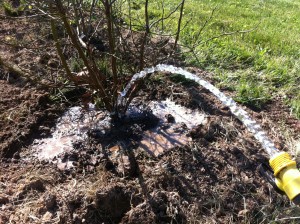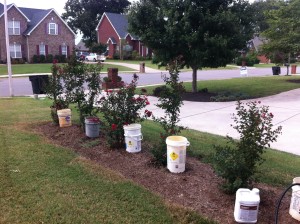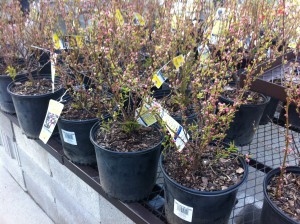You’ve seen the commercial, haven’t you? The infomercial, as seen on t.v., hose that shrivels? Don’t buy that unless you want to replace in a year.
Hoses are an investment. Here’s how to buy the right one, the first time.
For a landscape, purchase 100 feet lengths. 50-75 feet is the next best thing. If you’re only watering plants on a patio 50 ft. is more than enough.
I prefer 3/4″ diameter, but it doesn’t have to be premium rubber. Buy a professional grade hose in black color. If you take care of the hose, it will last over 10 years. When not in active use, drain the hose and roll. Store in a shaded place. Sunlight degrades the plastic or rubber hose. The less sunlight, the longer the hose lasts. I keep mine in the garage or under the deck.
3/4″ diameter water hoses are easier to repair than 5/8″ or 1/2″.
Dragging hoses through the yard can damage delicate plant leaves and stems. Consider buying two hoses and get a Y splitter to connect two at the source. Then you don’t have to drag one back and forth, back and forth. Each time the hose is moved, it has the potential to damage delicate leaves and stems. I’ve damaged more tender young hostas while dragging a hose than any other reason.
Do you have a particular kind of hose that you like? Please leave a comment on the Facebook page.







